
Joya de Cerén: The Pompeii of the Americas
Explore Joya de Cerén, El Salvador's ancient village frozen in time, and uncover the daily life of a pre-Hispanic farming community preserved under volcanic ash.
Nestled in the heart of El Salvador, Joya de Cerén is a UNESCO World Heritage site that offers a glimpse into the daily lives of a pre-Hispanic farming community. Often referred to as the 'Pompeii of the Americas,' this ancient village was remarkably preserved under layers of volcanic ash from an eruption around 600 AD. Unlike other archaeological sites, Joya de Cerén provides an unparalleled snapshot of ordinary life, detailing the homes, communal buildings, and agricultural practices of its inhabitants. Visitors to Joya de Cerén can wander through the excavated remains of homes and communal buildings, seeing tools, pottery, and even food remnants left behind by the villagers. The site’s interpretative center provides insightful exhibits that put these discoveries into context, helping tourists understand the significance of what they are seeing. Guided tours are available, and they offer detailed narratives that bring the ancient village to life. The lush surroundings and well-maintained grounds make Joya de Cerén not just an educational experience but also a serene escape. The site is conveniently located near San Salvador, making it an easy day trip. Whether you are a history buff, an archaeology enthusiast, or simply curious about ancient cultures, Joya de Cerén offers a unique and enriching experience.
Local tips in Joya de Ceren Archaeological Site
- Visit early in the morning to avoid crowds and the midday heat.
- Wear comfortable walking shoes as the site requires a fair amount of walking.
- Bring a hat and sunscreen; there is limited shade at the site.
- Don't miss the interpretative center for detailed exhibits and informative displays.
- Consider hiring a local guide for a more in-depth understanding of the site.
- Combine your visit with a trip to nearby San Andrés Archaeological Site for a broader historical perspective.
Joya de Cerén: The Pompeii of the Americas
Nestled in the heart of El Salvador, Joya de Cerén is a UNESCO World Heritage site that offers a glimpse into the daily lives of a pre-Hispanic farming community. Often referred to as the 'Pompeii of the Americas,' this ancient village was remarkably preserved under layers of volcanic ash from an eruption around 600 AD. Unlike other archaeological sites, Joya de Cerén provides an unparalleled snapshot of ordinary life, detailing the homes, communal buildings, and agricultural practices of its inhabitants. Visitors to Joya de Cerén can wander through the excavated remains of homes and communal buildings, seeing tools, pottery, and even food remnants left behind by the villagers. The site’s interpretative center provides insightful exhibits that put these discoveries into context, helping tourists understand the significance of what they are seeing. Guided tours are available, and they offer detailed narratives that bring the ancient village to life. The lush surroundings and well-maintained grounds make Joya de Cerén not just an educational experience but also a serene escape. The site is conveniently located near San Salvador, making it an easy day trip. Whether you are a history buff, an archaeology enthusiast, or simply curious about ancient cultures, Joya de Cerén offers a unique and enriching experience.
When is the best time to go to Joya de Ceren Archaeological Site?
Iconic landmarks you can’t miss
Parque Arqueológico Joya de Cerén
Discover the Mayan heritage at Parque Arqueológico Joya de Cerén, a UNESCO World Heritage Site that reveals the ancient civilization's daily life.

Cementerio Joya de Cerén
Explore the ancient ruins of Cementerio Joya de Cerén, a UNESCO World Heritage site that unveils the rich history of El Salvador's pre-Hispanic civilization.

Museo de Joya de Cerén
Explore the ancient Mayan village at Museo de Joya de Cerén, a UNESCO World Heritage site showcasing the rich history of El Salvador.
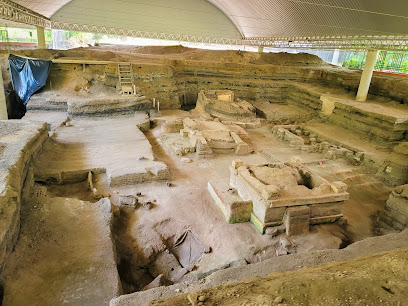
Unmissable attractions to see
Ecoparque El Espino
Ecoparque El Espino: A lush ecological park in El Salvador offering adventure, relaxation, and a rich diversity of wildlife and flora.

Military Museum of the Armed Forces of El Salvador
Discover the Military Museum of the Armed Forces of El Salvador, where rich history and captivating exhibits bring the past to life for every visitor.

Basilica Sagrado Corazon
Explore the architectural wonder of Basilica Sagrado Corazon, a serene sanctuary in San Salvador, rich in history and beauty.

Chorros de la Calera
Explore the breathtaking waterfalls and lush landscapes of Chorros de la Calera, a serene nature preserve in El Salvador perfect for outdoor adventures.
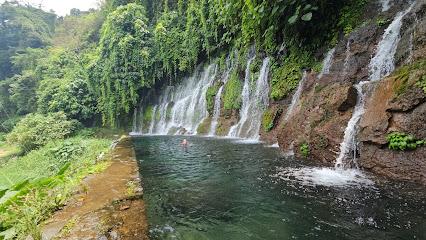
Oasis - Water and Recreational Park
Experience the ultimate family fun at Oasis - Water and Recreational Park in San Juan Opico, where adventure meets relaxation in a beautiful setting.

Cinquera Forest Ecological Park
Explore the breathtaking biodiversity and rich history of Cinquera Forest Ecological Park, a tranquil escape in El Salvador's lush landscape.
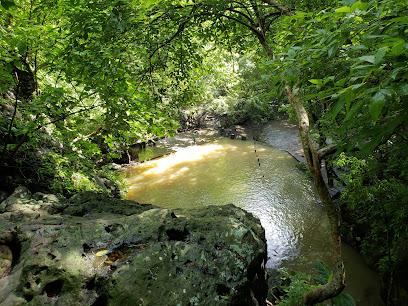
Museo y Biblioteca Luis Alfaro Durán
Explore the literary and historical treasures of El Salvador at Museo y Biblioteca Luis Alfaro Durán, a cultural hub in San Salvador.

Cordillera del Bálsamo
Discover the breathtaking beauty of Cordillera del Bálsamo, a must-visit mountain range near Santa Tecla, El Salvador, for nature lovers and adventure seekers.

Cementerio Joya de Cerén
Explore the serene Cementerio Joya de Cerén, a UNESCO World Heritage site that beautifully blends history and tranquility in El Salvador.

Museo de Joya de Cerén
Discover the rich heritage of El Salvador at Museo de Joya de Cerén, a UNESCO World Heritage site showcasing ancient life through remarkable artifacts.

Laguna de Caldera
Explore the scenic beauty of Laguna de Caldera, a serene nature preserve in El Salvador offering breathtaking views and diverse wildlife experiences.
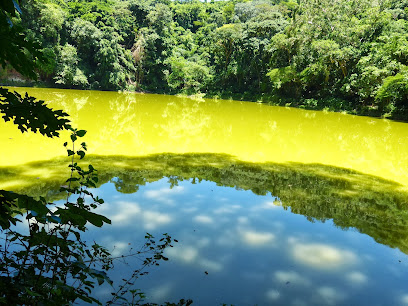
Los Chintos.
Discover Los Chintos, a captivating tourist attraction in Quezaltepeque, offering stunning landscapes and a glimpse into local traditions in El Salvador.

El Sirin el Ámate
Experience the natural beauty and cultural richness of El Sirin el Ámate in Valle Nuevo, a serene tourist attraction perfect for relaxation and exploration.

Finca Lupo
Experience the serene beauty and rich biodiversity of Finca Lupo in Lomas de Santiago, a tranquil destination for nature lovers and cultural explorers.

ANP El Jabalí
Explore the stunning natural beauty of ANP El Jabalí in Quezaltepeque, a tranquil escape for nature lovers and adventure seekers in El Salvador.
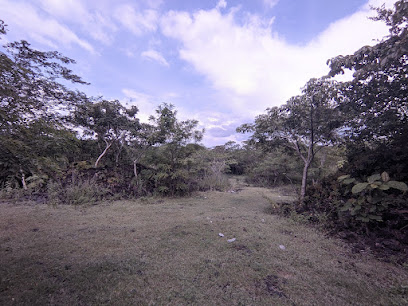
Essential places to dine
Picnic Steak House
Experience premium steaks and exceptional service at Picnic Steak House in Santa Tecla – where every meal is a celebration of flavor.

Linda Vista Garden
Experience exquisite dining amidst breathtaking gardens at Linda Vista Garden in Santa Tecla - your serene getaway in El Salvador.

La Pampa Restaurant
Experience authentic Argentinian cuisine at La Pampa Restaurant in Álvarez, featuring exquisite grilled meats and a vibrant dining atmosphere.

Las Brumas Grill & Cafe
Discover the culinary delights at Las Brumas Grill & Cafe, where exquisite flavors meet breathtaking views of San Salvador Volcano.

Hacienda Real
Experience the vibrant flavors of El Salvador at Hacienda Real – where culinary tradition meets modern elegance.

Faisca do Brasil
Savor the authentic flavors of Brazil at Faisca do Brasil in San Salvador - where every meal is a celebration of culture.

Delikat
Discover the exquisite flavors of El Salvador at Delikat - where every meal is crafted with passion and served in a stunning ambiance.

Cadejo Brewing Company
Experience the vibrant craft beer culture at Cadejo Brewing Company in Antiguo Cuscatlán, offering unique brews and delicious cuisine in a welcoming atmosphere.

El Quijote Volcán
Experience exquisite Salvadoran cuisine amidst breathtaking mountain views at El Quijote Volcán in Santa Tecla.

Il Bongustaio
Experience authentic Italian flavors at Il Bongustaio in San Salvador—perfect for romantic dinners or lively group gatherings.

Picasso Stone Flame Oven
Discover the culinary elegance of Picasso Stone Flame Oven in San Salvador – where every dish is a masterpiece crafted with passion.

El Holandés Errante BBQ
Experience mouthwatering barbecue at El Holandés Errante BBQ in San Salvador - where every bite tells a story of flavor and tradition.

Restaurante Palbau
Experience authentic Salvadoran cuisine at Restaurante Palbau in Joya de Ceren, where flavor meets tradition.
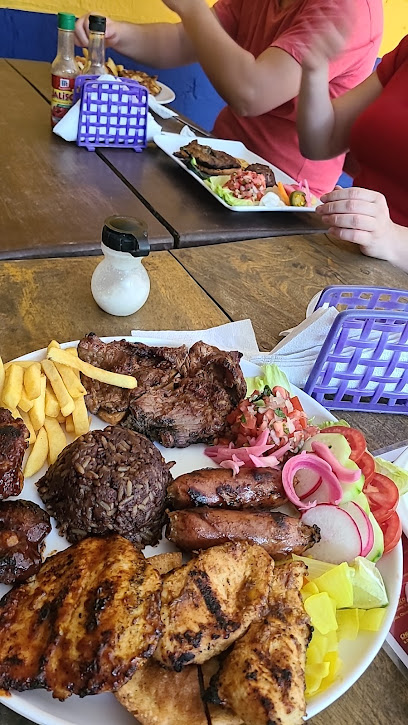
Pupusería El Rincón de Mamá Julia
Discover authentic Salvadoran cuisine at Pupusería El Rincón de Mamá Julia - home of delicious pupusas in San Salvador.

Markets, malls and hidden boutiques
Parque Arqueológico Joya de Cerén
Discover the rich history of the ancient Maya at Joya de Cerén, a UNESCO World Heritage site and an archaeological treasure in El Salvador.

Agroservicio Joya de Ceren
Discover Agroservicio Joya de Ceren: Your go-to hardware store for quality tools and materials in Joya de Ceren, El Salvador.

Museo de Joya de Cerén
Discover the ancient world of the Maya at Museo de Joya de Cerén, a UNESCO World Heritage site showcasing remarkable archaeological treasures.

Tienda anita
Explore Tienda Anita: A treasure trove of local crafts and traditional goods in Nuevo Sitio del Nino, El Salvador.

Subli Store SV
Explore Subli Store SV in Sitio del Niño for unique gifts and authentic Salvadoran crafts that celebrate the local culture.

Yohaos
Experience the enchanting world of fragrances at Yohaos in Aqua Escondida, where every scent tells a story.
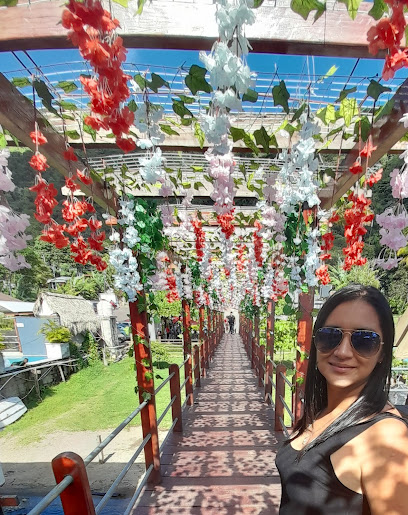
Totos anime
Discover a vibrant world of anime collectibles at Totos Anime, San Juan Opico's premier gift shop for fans and enthusiasts.

Tienda Huesito
Experience the essence of El Salvador at Tienda Huesito, a captivating store in Nuevo Sitio del Nino filled with local treasures and warm hospitality.

Ciber LETTY
Discover exquisite home goods and unique Salvadoran craftsmanship at Ciber LETTY in San Juan Opico, a must-visit for every traveler.

Tienda Las Chinas
Explore the heart of San Juan Opico at Tienda Las Chinas, where local flavors meet authentic craftsmanship in a vibrant shopping experience.

Tienda Elizabeth
Discover the authentic taste of El Salvador at Tienda Elizabeth, a charming grocery store offering local produce and unique artisanal goods.

Tienda margarita
Discover the vibrant local culture at Tienda Margarita, where authentic Salvadoran crafts and souvenirs await in Lomas de Santiago.

Tienda yomari
Discover the heart of El Salvador at Tienda Yomari, your local convenience store for snacks, drinks, and unique souvenirs.

Tienda Alex
Explore Tienda Alex for a unique shopping experience featuring local crafts and products that reflect the vibrant culture of the region.

Tienda Katerin
Explore the authentic flavors of El Salvador at Tienda Katerin in Joya de Cerén, where local ingredients and culinary delights await.

Essential bars & hidden hideouts
La Favela Sports Karaoke Bar
Experience the vibrant nightlife and mouth-watering grilled cuisine at La Favela Sports Karaoke Bar, the perfect spot for fun and entertainment.

Cadejo Brewing Company
Discover the essence of local brewing at Cadejo Brewing Company, where craft beer meets vibrant atmosphere in Sitio del Niño.

El Norteño Discotec Bar
Discover the vibrant nightlife at El Norteño Discotec Bar in Sitio del Niño, where great music and lively atmosphere come together for an unforgettable experience.

Restaurante Palbau
Savor the authentic tastes of El Salvador at Restaurante Palbau, where local flavors meet warm hospitality in a charming setting.

El bosquecito de Joyas
Experience the authentic flavors of El Salvador at El Bosquecito de Joyas, a charming restaurant in Joyas de Ceren.

Taberna Live Music
Discover the vibrant nightlife of San Salvador at Taberna Live Music, where every night brings unforgettable live performances and delicious drinks.

Campero Beers
Experience the essence of El Salvador's craft brewing scene at Campero Beers in San Juan Opico, where every sip tells a story.

Buso papa chico.
Experience the rich flavors of Mexico at Buso Papa Chico, a hidden gem in Joya de Ceren offering authentic cuisine and a warm atmosphere.

LA TABERNA DE TIRIZ
Discover the vibrant nightlife of Sitio del Niño at La Taberna de Tiriz, where friendly locals and delicious drinks await your arrival.

Sexy club bar
Discover the vibrant nightlife of Sitio del Niño at the Sexy Club Bar, a captivating girl bar filled with entertainment and local culture.

Los 3 búhos (Claudia)
Experience the vibrant local charm at Los 3 Búhos, a cozy bar in Sitio del Niño, perfect for sipping cocktails and mingling with locals.

K29 GASTROBAR
Experience the best of dining and sports at K29 Gastropub in San Juan Opico, where flavorful dishes and live games create unforgettable moments.

Chicos Crinller Bars
Experience the vibrant nightlife of Masajapa at Chicos Crinller Bars, a local favorite for drinks and good company.

Rueda martillo
Experience the vibrant nightlife of Nuevo Sitio del Nino at Rueda Martillo, where local drinks and lively entertainment await.

El peliguey
Experience the vibrant nightlife of Sitio del Niño at El Peliguey, where handcrafted cocktails and local culture create unforgettable moments.

Local Phrases about Joya de Ceren Archaeological Site
-
- HelloHola
[oh-la] - GoodbyeAdiós
[ah-dee-ohs] - YesSí
[see] - NoNo
[no] - Please/You're welcomePor favor/De nada
[por fah-bor/de nah-dah] - Thank youGracias
[grah-see-as] - Excuse me/SorryPerdón
[pair-dohn] - How are you?¿Cómo estás?
[koh-moh es-tahs] - Fine. And you?Bien. ¿Y tú?
[bee-en. ee too] - Do you speak English?¿Hablas inglés?
[ah-blahs een-glays] - I don't understandNo entiendo
[noh en-tee-en-doh]
- HelloHola
-
- I'd like to see the menu, pleaseMe gustaría ver el menú, por favor
[may goos-tah-ree-ah behr el meh-noo, por fah-bor] - I don't eat meatNo como carne
[noh koh-moh kahr-neh] - Cheers!¡Salud!
[sah-lood] - I would like to pay, pleaseMe gustaría pagar, por favor
[may goos-tah-ree-ah pah-gahr, por fah-bor]
- I'd like to see the menu, pleaseMe gustaría ver el menú, por favor
-
- Help!¡Ayuda!
[ah-yoo-dah] - Go away!¡Vete!
[veh-teh] - Call the Police!¡Llama a la Policía!
[yah-mah ah lah poh-lee-see-ah] - Call a doctor!¡Llama a un doctor!
[yah-mah ah oon dohk-tohr] - I'm lostEstoy perdido/a
[es-toy pair-dee-doh/ah] - I'm illEstoy enfermo/a
[es-toy en-fehr-moh/ah]
- Help!¡Ayuda!
-
- I'd like to buy...Me gustaría comprar...
[may goos-tah-ree-ah kohm-prahr] - I'm just lookingSolo estoy mirando
[soh-loh es-toy mee-rahn-doh] - How much is it?¿Cuánto cuesta?
[kwan-to kwehs-tah] - That's too expensiveEso es demasiado caro
[eh-soh es de-mah-see-ah-doh kah-roh] - Can you lower the price?¿Puede bajar el precio?
[pweh-de bah-hahr el pree-syoh]
- I'd like to buy...Me gustaría comprar...
-
- What time is it?¿Qué hora es?
[keh oh-rah es] - It's one o'clockEs la una
[es lah oo-nah] - Half past (10)Son las diez y media
[sohn lahs dyehs ee meh-dee-ah] - MorningMañana
[mah-nyah-nah] - AfternoonTarde
[tahr-deh] - EveningNoche
[noh-cheh] - YesterdayAyer
[ah-yehr] - TodayHoy
[oy] - TomorrowMañana
[mah-nyah-nah] - 1Uno
[oo-noh] - 2Dos
[dohs] - 3Tres
[trehs] - 4Cuatro
[kwah-troh] - 5Cinco
[seen-koh] - 6Seis
[says] - 7Siete
[syeh-teh] - 8Ocho
[oh-choh] - 9Nueve
[nweh-veh] - 10Diez
[dyehs]
- What time is it?¿Qué hora es?
-
- Where's a/the...?¿Dónde está...?
[dohn-deh es-tah] - What's the address?¿Cuál es la dirección?
[kwal es lah dee-rek-syohn] - Can you show me (on the map)?¿Puedes mostrarme (en el mapa)?
[pweh-dehs mohs-trar-meh (en el mah-pah)] - When's the next (bus)?¿Cuándo es el próximo (autobús)?
[kwan-doh es el proh-ksee-moh (ow-toh-boos)] - A ticket (to ....)Un boleto (a ....)
[oon boh-leh-toh (ah)]
- Where's a/the...?¿Dónde está...?
History of Joya de Ceren Archaeological Site
-
Joya de Ceren was discovered in 1976 by Dr. Payson Sheets, an archaeologist from the University of Colorado. The site was uncovered accidentally during the construction of governmental grain storage silos. The discovery provided an unprecedented look into the daily life of a pre-Columbian farming community.
-
Around 600 AD, the Loma Caldera volcano erupted, covering the village of Joya de Ceren in a thick layer of volcanic ash. This catastrophic event preserved the site in remarkable detail, earning it the nickname 'Pompeii of the Americas.' The eruption forced the inhabitants to flee, leaving behind a snapshot of daily life frozen in time.
-
In 1993, Joya de Ceren was declared a UNESCO World Heritage Site. This recognition was due to its exceptional preservation and its ability to provide a unique insight into the lives of ordinary people in Mesoamerica. The site is considered one of the most important and informative archaeological sites in the region.
-
Over the years, extensive excavations have revealed a wealth of information about the village's layout, including houses, communal buildings, and agricultural fields. Artifacts such as pottery, tools, and foodstuffs have been found, offering a detailed picture of the inhabitants' daily activities and their social and economic practices.
-
The site provides significant evidence of the agricultural practices of the inhabitants, who cultivated crops such as maize, beans, and squash. The preservation of fields, gardens, and storage facilities has allowed researchers to understand the sophisticated farming techniques and the importance of agriculture to the community's economy and sustenance.
-
Joya de Ceren offers invaluable insights into the social structure and cultural practices of its inhabitants. The arrangement of buildings and communal spaces suggests a well-organized society with shared responsibilities and activities. Ritual objects and spaces indicate the presence of spiritual and religious practices, providing a deeper understanding of the community's beliefs and traditions.
-
The architecture of Joya de Ceren is notable for its use of adobe and thatch in construction. The preservation of structures such as homes, workshops, and communal buildings has provided a detailed understanding of the architectural styles and building techniques of the time. The layout of the village also reflects the practical and social needs of its inhabitants.
Joya de Ceren Archaeological Site Essentials
-
Joya de Ceren Archaeological Site is located about 30 kilometers northwest of San Salvador, the capital city of El Salvador. The nearest international airport is El Salvador International Airport (SAL), also known as Monseñor Óscar Arnulfo Romero International Airport. From the airport, you can take a taxi, rental car, or arrange for a private shuttle to the site. The drive typically takes around an hour. Public buses are available from San Salvador to the town of San Juan Opico, from where you can take a local taxi to the archaeological site.
-
Once at Joya de Ceren, the site is best explored on foot. For traveling within El Salvador, taxis and ride-sharing services like Uber are widely available in urban areas. Public buses (known locally as 'chicken buses') are a cost-effective but less comfortable option. Renting a car provides the most flexibility, especially if you plan to visit other sites around the country.
-
The official currency in El Salvador is the US Dollar (USD). Credit and debit cards are widely accepted in major hotels, restaurants, and shops, but it is advisable to carry some cash for smaller establishments and rural areas. ATMs are available in San Salvador and other major cities, but it is recommended to withdraw sufficient cash before visiting remote sites like Joya de Ceren.
-
El Salvador has areas with high crime rates, particularly in certain neighborhoods of San Salvador. Tourists are advised to avoid areas such as Soyapango, Mejicanos, and Apopa. While Joya de Ceren is generally safe, always remain vigilant. Avoid walking alone at night and keep an eye on your belongings. It is best to hire a reputable guide or join a tour group for added safety.
-
In case of an emergency, dial 911 for police, fire, or medical assistance. It is advisable to have travel insurance that covers medical emergencies. For minor health issues, pharmacies are available in nearby towns. The nearest hospital is in San Salvador. Make sure to carry a copy of your passport and emergency contact numbers at all times.
-
Fashion: Do wear comfortable walking shoes and light, breathable clothing. Avoid wearing flashy jewelry. Religion: Do respect local customs. While Joya de Ceren is not a religious site, it's important to be respectful when visiting nearby churches or religious landmarks. Public Transport: Do be respectful and offer your seat to elderly passengers. Don't eat or drink on public transport. Greetings: Do greet people with a friendly 'Hola' or 'Buenos días'. A handshake is common. Eating & Drinking: Do try local dishes like pupusas. Don't refuse food if offered, as it can be considered impolite.
-
To experience Joya de Ceren like a local, consider hiring a knowledgeable guide who can provide in-depth historical context. Visit the site early in the morning to avoid crowds and the midday heat. Engage with local vendors and try traditional Salvadoran snacks sold nearby. Don't miss the on-site museum, which houses artifacts and exhibits that further explain the significance of the archaeological findings.
Nearby Cities to Joya de Ceren Archaeological Site
-
Things To Do in Santa Ana
-
Things To Do in Suchitoto
-
Things To Do in La Libertad
-
Things To Do in Chalchuapa
-
Things To Do in Copán Ruinas
-
Things To Do in Gracias
-
Things To Do in Santa Rosa de Copán
-
Things To Do in San Miguel
-
Things To Do in Guatemala City
-
Things To Do in Antigua Guatemala
-
Things To Do in Rio Dulce
-
Things To Do in Panajachel
-
Things To Do in Lake Atitlán
-
Things To Do in Puerto Barrios
-
Things To Do in Chichicastenango








